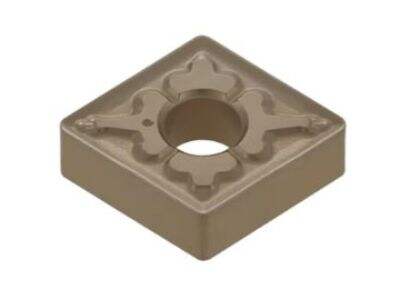Hi everyone! So, what I want to share with you today is the coolness of turning inserts! In factories where people produce different kinds of products, they may sometimes need to cut materials into different shapes. Enter turning inserts, the tool that saves the day. They are custom-crafted devices to assist in this critical work. Are you familiar with the many types of turning inserts? There are different jobs that go with each type. So, let’s go through everything about them and how they make cutting so much easier!
Turning Inserts Selection Guide
Inserts for turning/puffers can be made of several materials and be of different shapes and sizes. Carbide, ceramics, and diamond are the materials that account for the majority of turning inserts. The most chosen are carbide inserts, because of how strong they are, not to mention how long they can last without breaking. Ceramic and diamond inserts are even stronger, albeit pricier. They may not see as much use as carbide inserts, but they have a few of their own special uses of course!
The geometry from the turning insert is equally critical since it establishes how the component material will be machined. There are triangle, square and circle-shaped inserts. Every shape has its own function. Cutting geometry refers to the angles and shapes that are found on the edge of the insert. This cutting geometry influences what the insert cuts (which material cutting inserts use). For instance, a triangular-shaped insert will make a sharper cut compared to a square-shaped insert. This is an indication that getting the right shape can be beneficial to achieve the best results when cutting.
Getting Started Guide for Inserting Inserts
Focus Insert for Hard to Machine Materials
Some materials they're very tough, and they can be difficult to cut. That is why specialized turning inserts have been developed to allow for easier machining of these tougher materials. For example, to chop superalloys (extremely robust metals) you also require an insert formed from a substance known as polycrystalline cubic boron nitride (PCBN). These inserts are made from very hard material and can withstand the heat of cutting. Specialized inserts are critical for conserving top quality and valuable time when working with tough materials.
Turning Inserts: Maintenance and Troubleshooting
Like any other tools, inserts that turn require preventative maintenance and troubleshooting. Be sure to clean the inserts after you use them. This prevents rust and corrosion, which can ruin the tools. Make sure you sharpen the inserts when they dull over time. A dull insert leads to poor cuts and waste material, keeping sharp is the name of the game!
If you find the insert isn't cutting well, it might be due to incorrect use, improper maintenance, or dull edges. It’s essential to attempt to figure out the issue, and resolve it immediately. Watch for your tools and you'll be the one who gets the maximum results MIT anytime!
So, that’s it, everyone! And that you discover something new and fascinating about inserts. These are specialty tools — shaped differently, built from different materials, capable of rendering a material cut into a different form. For optimal results, always care for your inserts and match them to the material you're working on. Thank you for reading, and happy cutting!

 EN
EN
 AR
AR
 BG
BG
 HR
HR
 CS
CS
 DA
DA
 NL
NL
 FI
FI
 FR
FR
 DE
DE
 EL
EL
 HI
HI
 IT
IT
 JA
JA
 KO
KO
 NO
NO
 PL
PL
 PT
PT
 RO
RO
 RU
RU
 ES
ES
 SV
SV
 TL
TL
 IW
IW
 ID
ID
 LT
LT
 SR
SR
 SK
SK
 UK
UK
 VI
VI
 HU
HU
 TH
TH
 TR
TR
 FA
FA
 MS
MS
 GA
GA
 AZ
AZ
 BN
BN



